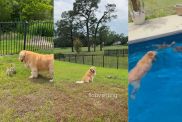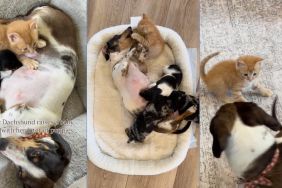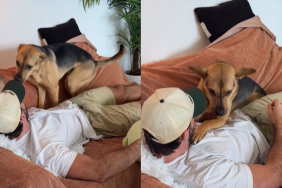Pet parents may have known this all along. Now, there is proof that when we see our dogs, we react in the same way as we do when we see our children.
Researchers at Massachusetts General Hospital published a new study published in the journal PLOS One showing the strong bond between pet parent and pet. The scientists monitored the brain activity of volunteers by showing them photos of their dogs, their children, and unfamiliar dogs and children.
The data found a “substantial overlap in brain activation patterns in regions involved in reward, emotion, and affiliation elicited by images of both a mother’s own child and dog.”
Changes in blood flow and oxygen levels differed when shown familiar photos as opposed to random photos of other dogs and children.
The authors of the study wrote, “These results demonstrate that the mother-child and mother-dog bond share aspects of emotional experience and patterns of brain function, but there are also brain-behavior differences that may reflect the distinct evolutionary underpinning of these relationships.”
A number of scientists have explored the human-dog relationship from the canine point of view. Neurobiologists in Budapest used brain scanners to investigate how dogs detect emotions in human and dog vocalizations. They trained the dogs to get in the MRI scanner and hold still, which took a few months of repetitive practice. These scientists discovered that there are dog brain regions that light up preferentially when hearing human or dog emotional cues.
Also a group of veterinary scientists from Vienna found that dogs — much like young children — are feel more eager and safer exploring new environments with a familiar caregiver at their side.
The women in the study at Massachusetts General Hospital were all moms. The researchers have not worked with men, women without children, or moms who live with cats; so they don’t know if the results of a similar study would be the same. They assume the maternal bond would carry over to cat parents with children too.
Sources: PLOS One









